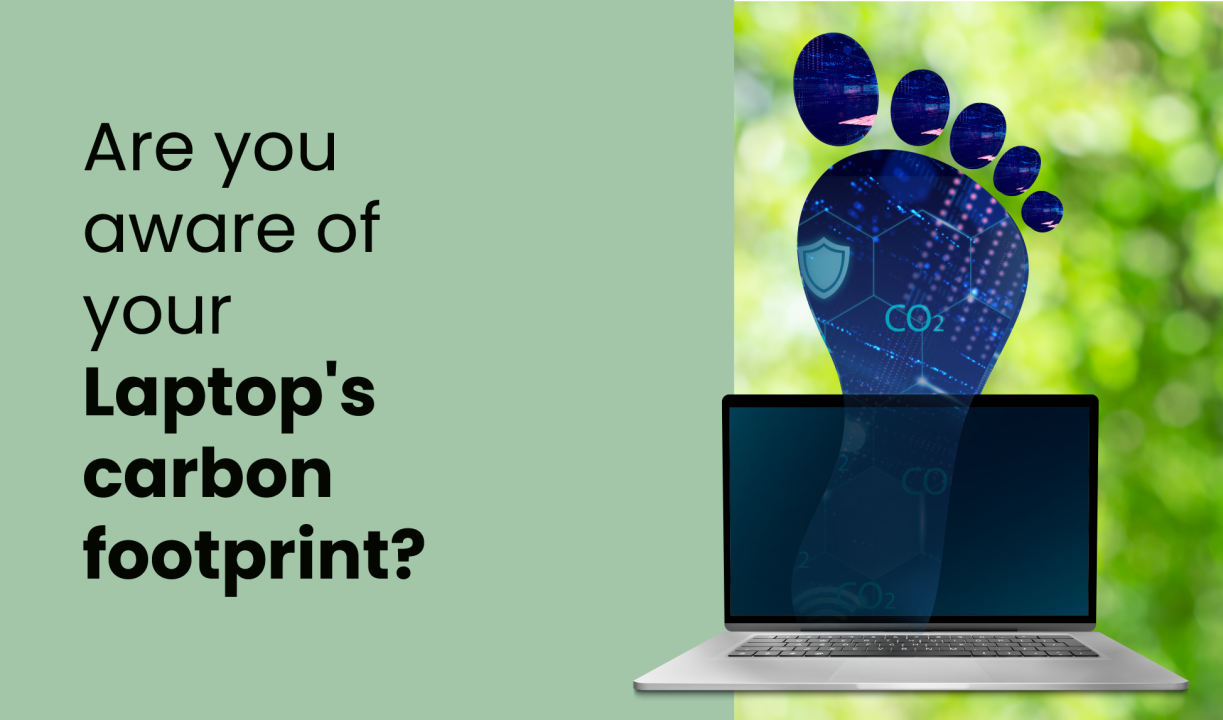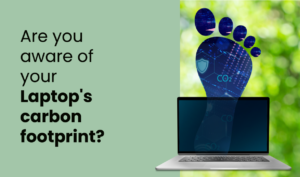With growing concerns about environmental sustainability, reducing your laptop’s carbon footprint is an effective way to minimize your environmental impact. From the production process to everyday usage and eventual disposal, laptops contribute to greenhouse gas emissions. By adopting eco-friendly practices, you can extend your laptop’s lifespan and make a positive impact on the environment.
1. Choose Energy-Efficient Laptops
When purchasing a laptop, opt for models with:
- Energy Efficiency Certifications: Look for ENERGY STAR or EPEAT-rated devices.
- Low-Power Components: Devices with efficient processors (like Apple’s M-series or Intel’s EVO-certified processors) consume less power.
- Optimized Battery Usage: Select laptops with long-lasting batteries, reducing the frequency of charging.
2. Reduce Power Consumption During Use
Minimizing energy usage while using your laptop is key:
- Enable Power-Saving Modes: Activate energy-saving features in your laptop’s settings.
- Lower Screen Brightness: Reduce brightness to an optimal level.
- Disable Unnecessary Features: Turn off Bluetooth, Wi-Fi, and other peripherals when not in use.
- Use Efficient Charging Practices: Avoid overcharging and unplug the charger once the battery is full.
3. Extend Your Laptop’s Lifespan
The longer you use your laptop, the fewer resources are needed to replace it:
- Regular Maintenance: Clean your laptop to prevent overheating and ensure optimal performance.
- Upgrade Instead of Replace: Upgrade components like RAM or storage to keep your laptop relevant.
- Use Protective Accessories: Invest in a laptop case, keyboard covers, and screen protectors to prevent damage.
4. Opt for Sustainable Power Sources
Reduce reliance on traditional electricity sources by:
- Using Renewable Energy: Charge your laptop using solar panels or plug into renewable-powered outlets.
- Portable Solar Chargers: Perfect for remote work or travel, solar chargers offer a green way to power your laptop.
5. Embrace Digital Over Physical
Reduce resource consumption by going digital:
- Cloud Storage: Minimize the use of physical drives by storing files in the cloud.
- Paperless Practices: Opt for digital note-taking and e-signatures instead of printing documents.
6. Responsibly Dispose of Old Laptops
When your laptop reaches the end of its life, dispose of it in an eco-friendly way:
- Recycle: Many manufacturers and retailers offer recycling programs for old electronics.
- Donate or Resell: Pass on functional laptops to schools, charities, or individuals in need.
- Repurpose Components: Extract parts for DIY projects or repairs.
7. Use Eco-Friendly Accessories
Switch to sustainable laptop accessories:
- Recycled Materials: Choose cases, bags, and stands made from recycled or biodegradable materials.
- Energy-Efficient Peripherals: Opt for low-energy keyboards, mice, and external monitors.
8. Monitor Your Digital Habits
Every small action counts:
- Close Unused Applications: Reduce energy use by shutting down unnecessary programs.
- Hibernate Instead of Sleep: Hibernate mode uses less power while preserving your work.
- Turn Off When Not in Use: Avoid leaving your laptop on standby overnight.
The Impact of Reducing Your Laptop’s Carbon Footprint
By adopting these practices, you contribute to:
- Lower Carbon Emissions: Reduced energy consumption leads to fewer greenhouse gases.
- Resource Conservation: Extending a laptop’s lifespan reduces demand for new materials.
- Environmental Awareness: Encouraging sustainable habits in others.
For more tech tips and sustainable practices, visit Psero.com. Their resources guide you toward making environmentally conscious choices without compromising performance.
Conclusion
Reducing your laptop’s carbon footprint is not just about energy savings—it’s a commitment to a greener future. By choosing energy-efficient models, adopting sustainable habits, and disposing of electronics responsibly, you can significantly reduce your environmental impact. Small changes lead to big results when it comes to sustainability.

